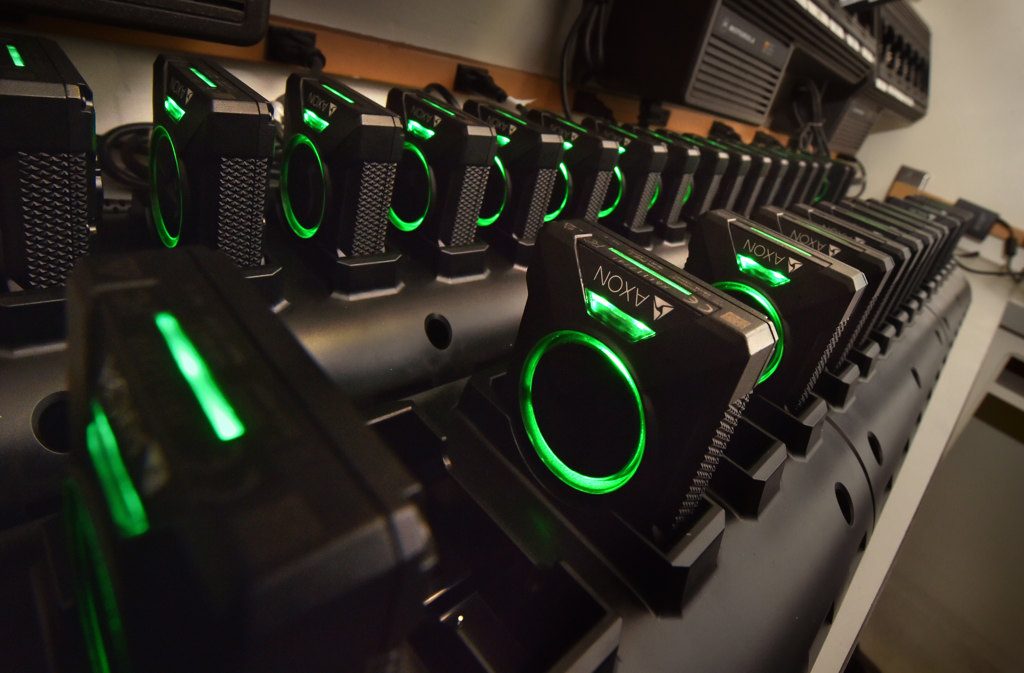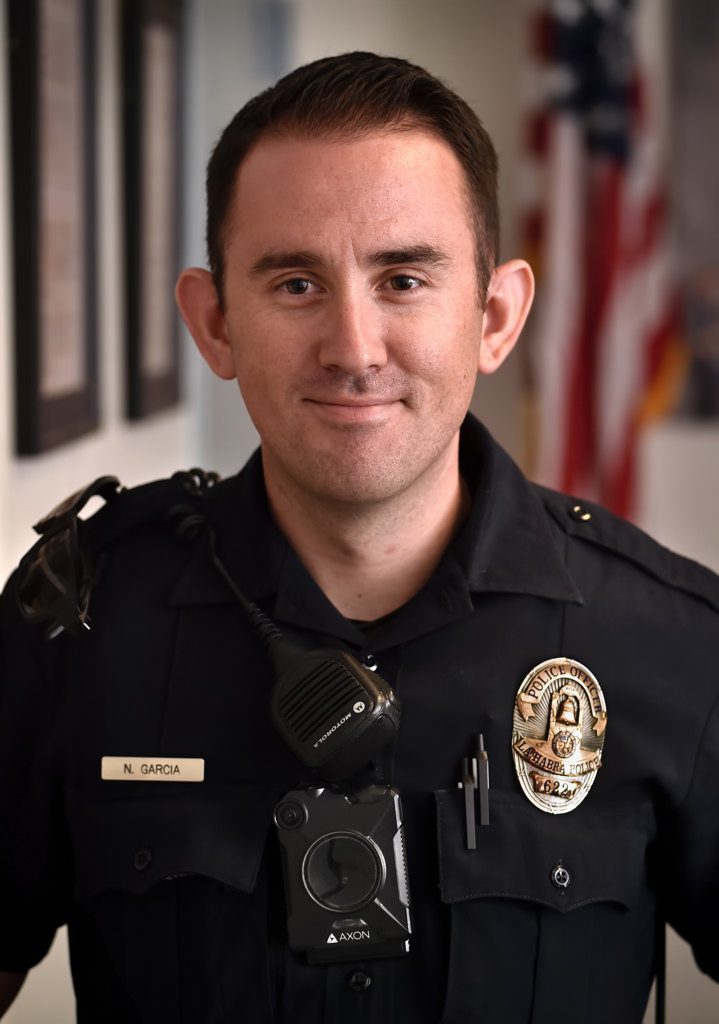Over the last six months, La Habra PD officers assigned to patrol, investigations and traffic slowly have been getting used to a new tool that marks a big step for the agency: Body Worn Cameras (BWCs).
Previously, the agency’s officers only had audio recordings of contacts made with the public (during interviews of suspects and victims) that were recorded with digital audio recorders. LHPD vehicles do not have dash cams.
So the rollout of 67 body-worn cameras, which began with a small test group in February and will be completed by the end of August, represents the agency’s first venture into video, a tool LHPD leaders believe will be a huge asset for the agency, as well as the public.
“It’s the goal of Chief Jerry Price to have the agency be as contemporary as possible, and to provide whatever tools best benefit our officers and members of the community,” said Lt. Adam Foster, one of the agency’s two leaders tasked with overseeing the implementation of body-worn cameras.

La Habra PD’s new body cameras, the Axon Body 2, in their docking station that charges the cameras and downloads the videos to the department’s storage server.
Photo by Steven Georges/Behind the Badge OC
“We wanted to make the right decision for our community and officers, not just because (BWCs) are now popular,” Lt. Foster said. “After much research, we found it was well worth it to go ahead with body cams.”
The LHPD joins a growing number of O.C. law enforcement agencies that have deployed body cameras. The Anaheim PD was the first to do so, closely followed by the Fullerton PD and Cal State Fullerton PD.
Last year, the Huntington Beach PD won approval for body-worn cameras. The Tustin PD recently introduced them, and the Santa Ana and Buena Park PD’s are in the process of rolling them out.
Lt. Foster started looking into body-worn cameras for the agency in early 2015, when he was a sergeant in the agency’s Professional Standards Unit. He continued to help oversee the rollout of the cameras, along with Capt. Dean Capelletti, after he was promoted to lieutenant a year ago.
“We’re 90-percent deployed,” Lt. Foster said Wednesday, Aug 16. He and Capt. Capelletti made sure to start with a test group of five to six patrol officers in February to work out any bugs before implementing the body cameras throughout the agency.

La Habra PD Officer Nathaniel Garcia with one of the department’s new body cameras. Officers are given the option of where they wish to wear the camera, but they must be front facing.
Photo by Steven Georges/Behind the Badge OC
After extensive research and testing, the LHPD selected the Axon Body 2 model, made by Taser.
“We were looking for cameras that were durable and had good functionality, not only for the user but administrators,” Lt. Foster said. “We also looked for systems that had the ability to transfer (videos) to the Orange County District Attorney’s Office in the most efficient means possible.”
The second-generation Axon Body 2 camera captures scenes in 143 degrees. The cameras have such features as audio mute buttons and dual-channel audio, which allows for ambient noises to be filtered out during the forensic stages of an investigation (officers are not able to alter or edit video they record in any fashion). Each camera also has a 30-second prerecord (video only) function, ensuring that any activity that occurs prior to the cameras recording function is activated has been captured to give the best account of the contact or activity being recorded.
The Axon Body 2 can run for more than 12 hours and record in high-definition 1080 horizontal lines of vertical resolution. The cameras have been drop-tested to six feet and are very durable for day-to-day police work.
Cameras are assigned to individual officers who, after a shift, place them in a docking station to have the videos uploaded and stored in a cloud-based storage system. It is at this time that the batteries are recharged for the next use.
So far, more than 3,000 videos have been uploaded, Lt. Foster said. On average, prosecutors and investigators at the Orange County District Attorney’s Office, as well as criminal defense attorneys, request 10 recorded incidents each week, Lt. Foster said.
State and federal laws regarding the release of body-worn camera footage still are being worked out.
“It’s a new tool, but it’s all about transparency and an opportunity to have an unbiased second set of eyes,” Lt. Foster said. “Once our officers got used to them, they liked the idea of having them. I definitely believe these will be beneficial to our agency and to members of the public.”
 Behind the Badge
Behind the Badge




